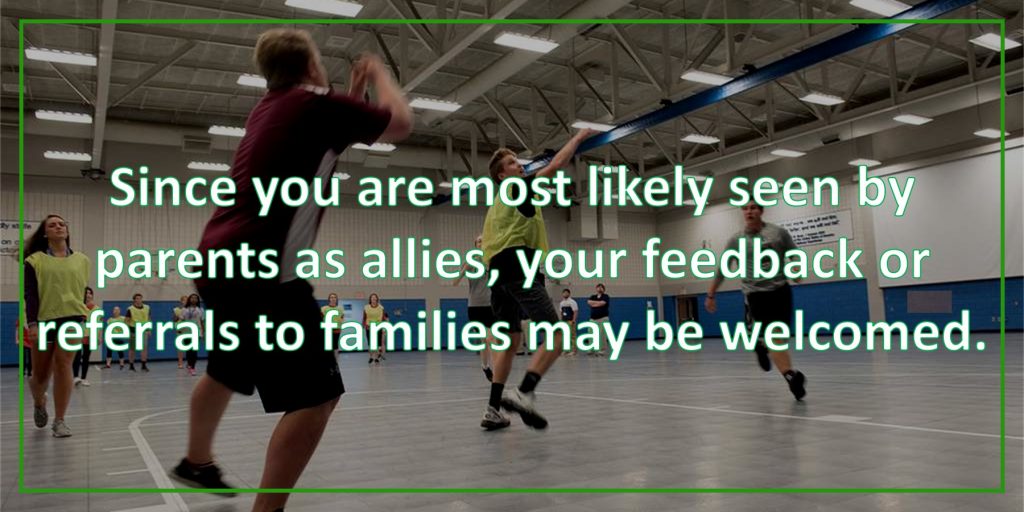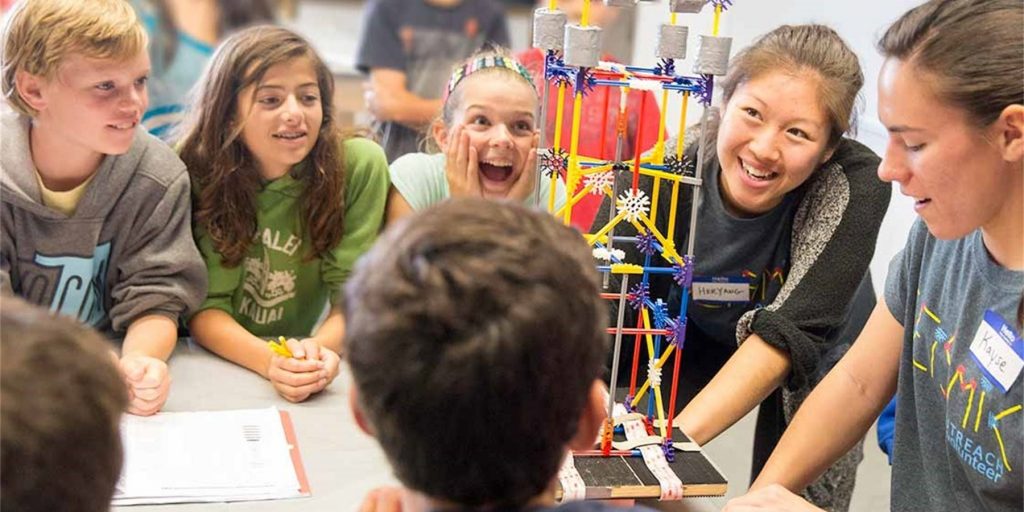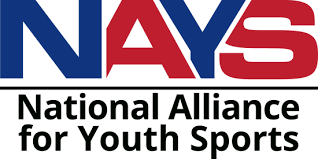Whether you’re a coach, an art teacher, or a Girl Scout leader, you’re a trusted adult in kids’ lives. The strongest bonds that many middle- and high-school-aged youth have in their lives is with their band director, Scout leader, or other youth activity leader.
You model behaviors for children and families that they may adopt at home, from demonstrating empathy to showing how to provide physical care to boundary setting.

Model respectful behavior and communication – especially when conflicts arise. Your influence can be greater than you know.
The respect that the youth in your program have for you, makes you a role model. By demonstrating respectful communication, good sportsmanship, and modeling helpful conflict resolution, you can have a life-long impact on children and youth.
Set standards and expectations.
Step in when you see another adult or a youth targeting someone and treating them with disrespect, including racist or sexist language (“you throw like a girl”). Sometimes, it’s more helpful to take a private moment after an incident – but sometimes you may want to make the point publicly that certain behaviors are not acceptable in your program.
Be a resource to families.
Have a good working knowledge of resources for children and youth – at school, in the community, so you can be a source of good information for youth or parents who may need such information. The Humboldt Community Resource List and the North Coast Resource Hub are two excellent resource guides.
Take that extra step.
You’re often the first to notice neglect or abuse, placing you in incredibly difficult situations as you decide whether what you see is placing a child in enough threat of harm to report the family to child protective services – a move that can result in ending your relationship with the family. This Child Protection Reporting Guide gives you more information on making a report and local resources to refer families to when a report is not warranted.
Since many cases are not investigated and neglect is even more common than physical abuse, your efforts to connect families with resources can go a long way. Parents can benefit greatly from your referrals to agencies that can address the area of concern.
Encourage your organization to offer a Stewards of Children training on how adults can help protect children from sexual abuse. Learn more about how to respond in a reassuring way when a child discloses abuse to you. Stewards of Children is an effective, inexpensive, 2 and ½ hour virtual training that teaches adults practical actions they can take to reduce instances of child sexual abuse in their organizations, families, and communities.
Connect with family resource centers, or tribal social service offices. Refer parents to supports in their area for extra assistance.

Be more than a leader - be a mentor.
Help kids succeed in all aspects of their life, and be part of their support system off the field or stage as well as on it. Learn ten tips for effective mentoring from Dr. Julie Connor.
Develop policies and procedures with the safety of children and youth in mind.
Many organizations have a policy where no adult is alone with a child in any enclosed or private area. Though it’s true that the media tends to focus attention on the very small percentage of youth leaders who abuse their role as trusted adult instead of focusing on the 99% who care deeply for kids, such policies protect everyone involved.
Many of your organizations already have policies around respectful communication and conflict resolution – and it may make sense to have youth and parents sign off on these policies stating they agree to abide by them.

Utilize local expertise.
Take advantage of area resources like Queer Humboldt, to train the adults in your program on how to be supportive to all youth, including LGBTQ youth, youth in foster care, and youth with behavioral health or cognitive challenges.
With some training and practice, you can enhance your communication with English Language Learners, reducing misunderstandings and frustration.
- Speak slowly and clearly. …
- Allow time for thinking. …
- Avoid idioms and slang. …
- Simplify your message with short, simple sentences. …
- Be curious and respectful.
Break isolation.
Take advantage of any opportunity to break the isolation of children or youth that you observe may be too much alone or lonely. You are a source of support, but so are the friendships that you can encourage among children themselves.
Be there for all the kids you care for.
Learn more about how to work with children with disabilities and how to create inclusive environments and enrich activities for children with specific learning needs.
Know your volunteers and employees.
The National Alliance for Youth Sports recommends background checks for all coaches, and many other organizations do the same.
Offer unconditional acceptance of youth.
These tips on improving your relationships with the kids and teens you serve are from a dance magazine, but they apply to leaders of all youth activities.
Share Family First on Facebook and spread the word that there are ways to get involved.

